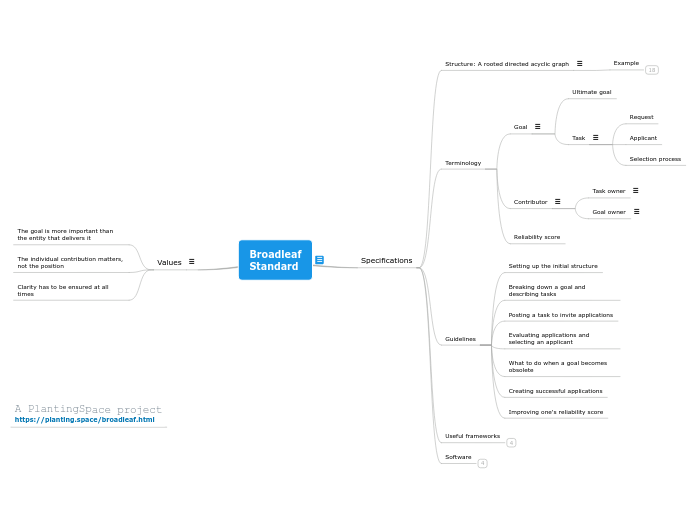Specifications
Structure: A rooted directed acyclic graph
Example
Terminology
Goal
Ultimate goal
Task
Request
Applicant
Selection process
Contributor
Task owner
Goal owner
Reliability score
Guidelines
Setting up the initial structure
Breaking down a goal and describing tasks
Posting a task to invite applications
Evaluating applications and selecting an applicant
What to do when a goal becomes obsolete
Creating successful applications
Improving one's reliability score
Useful frameworks
Software
Values
The goal is more important than the entity that delivers it
The individual contribution matters, not the position
Clarity has to be ensured at all times
